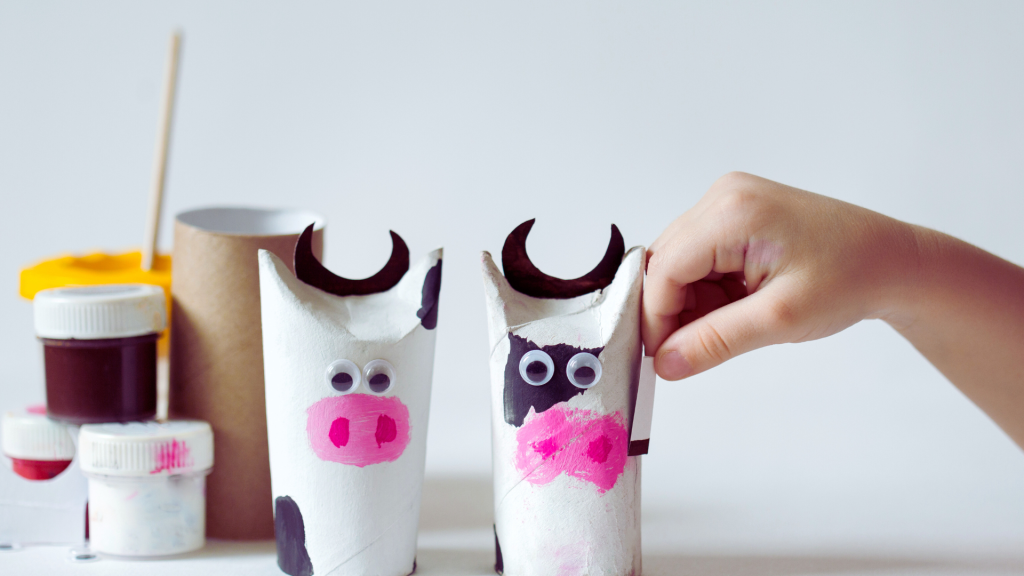Creating art with recycled materials allows artists to express their creativity while promoting sustainability. Recycled art not only minimizes waste but also encourages innovative thinking by transforming everyday items into unique works of art. By utilizing discarded materials, artists contribute to a more sustainable future and inspire others to consider the environmental impact of their choices.
Upcycling, the process of repurposing discarded objects into something new, is a key aspect of eco-friendly art. They demonstrate that art can be both visually appealing and environmentally responsible. This approach appeals to those looking to make a positive impact on the planet while engaging in a fulfilling artistic practice.
Exploring various techniques and ideas for using recycled materials can lead to unexpected and beautiful results. Each piece created tells a story of transformation and creativity, highlighting the value of sustainability in the art world. Embracing this practice not only empowers individual artists but also fosters a community focused on eco-consciousness and artistic expression.
The Fundamentals of Recycled Art
Recycled art is built on the foundation of transforming waste materials into creative and expressive works. This practice encompasses a variety of recyclable materials and hinges on two key processes: recycling and upcycling.
Understanding Recycled Materials
Recycled materials include items discarded by consumers, often categorized as waste. Common examples are plastic bottles, cardboard, metal scraps, and glass containers. These materials can be collected and repurposed, reducing the amount of waste entering landfills.
Artists can source these materials from local recycling centers or through community initiatives. By understanding which materials are recyclable, creators can select the best options for their work. The choice of materials directly influences the art’s aesthetics, durability, and message. Utilizing local waste resources fosters a connection between the art and the community, highlighting issues of consumerism and sustainability.
Overview of Recycling and Upcycling Processes
Recycling is the process of breaking down waste materials and remanufacturing them into new products. This often involves technological methods to optimize material recovery. For instance, plastics may be melted down and reshaped or transformed into new items such as textiles.
Upcycling, on the other hand, focuses on creatively repurposing materials without significant processing. It often adds value by enhancing the original item’s artistic or functional qualities. An example of upcycling would be turning an old bicycle into garden decor. Both processes contribute to reducing waste and promoting sustainable practices. By engaging in these methods, artists play a crucial role in minimizing environmental impact while expressing creativity.
Techniques and Materials in Recycled Art
Recycled art encompasses innovative methods using material that would otherwise contribute to waste. Artists often turn to common household items, exploring their potential through various techniques.
Working with Plastic Bottles and Bags
Plastic bottles and bags are versatile materials in recycled art. They can be transformed into intricate sculptures, functional items, or even decorative pieces.
Techniques:
- Cutting and Shaping: Bottles can be cut into strips, creating flexible components ideal for weaving or layering.
- Melting: Heat can reshape plastic bags into solid forms.
- Coloring: Paint or markers can enhance aesthetics.
Projects:
- Planters: Upcycled bottles become unique plant holders.
- Wall Art: Layers of colored plastics can form striking murals or 3D designs.
Creating Art from Discarded Objects
Artists frequently use discarded objects to create compelling and meaningful pieces. Items like old toys, utensils, and furniture can find new life in art projects.
Techniques:
- Assemblage: Combining various objects into a single work tells a story.
- Collage: Objects are layered, using adhesives to form visual narratives.
- Sculpture: 3D forms can be built by attaching multiple components.
Projects:
- Sculptures: A collection of utensils may become a whimsical figure.
- Furniture Art: Vintage chairs can be repainted and redesigned for functional art.
Paper-Based Techniques: Origami and Decoupage
Paper-based methods take advantage of materials like paper bags and magazines, allowing for creativity in design. Origami and decoupage highlight the artistic potential of paper recycling.
Techniques:
- Origami: Folding paper into intricate designs, turning paper bags into three-dimensional shapes.
- Decoupage: Adhering cut images onto surfaces, creating layered visual effects.
Projects:
- Decorative Bowls: Origami can create unique containers from paper.
- Wall Hangings: Decoupage uses old magazines to form colorful collages for display.
These techniques showcase the possibilities that arise when artists embrace recycled materials in their work.
Notable Artists and Impactful Works
Several artists have made significant contributions to the world of recycled art, using materials that would otherwise be discarded. Their works often carry strong messages about sustainability, consumerism, and environmental consciousness, challenging viewers to reconsider their relationship with waste.
Influential Recycled Material Artists
Guerra de la Paz blends textiles and found objects to create thought-provoking installations that explore themes of consumerism and waste. Their vibrant works often provoke dialogue about environmental issues. Nick Gentry utilizes old technology, such as floppy disks, to produce striking portraits that comment on digital obsolescence.
The Barefooted Welder incorporates scrap metal into intricate sculptures, showcasing the beauty of discarded materials. Robert Bradford’s colorful assemblages made from plastic toys call attention to plastic pollution. Steven Rodrig crafts detailed sculptures from electronic waste, bringing awareness to the environmental impact of e-waste.
Derek Gores recycles magazines and advertisements to create eye-catching collages. Vik Muniz transforms waste into art, often highlighting the lives of the people collecting it. Tim Noble and Sue Webster create shadow sculptures from trash, merging art and environmental activism in compelling ways.
Sculptures and Installations with a Message
Wim Delvoye is known for his intricate constructions, including pig sculptures made from recycled materials, which raise questions about consumption and ethics in art and food. Ptolemy Elrington makes remarkable sculptures from reclaimed bicycle parts, illustrating creativity in sustainability.
Each of these artists uses their medium to challenge societal norms. Their works not only captivate audiences but also inspire conversations about environmental responsibility. By transforming waste into art, they encourage viewers to reflect on the importance of recycling and rethinking material value.
Environmental Considerations and Artistic Consciousness
Artists increasingly focus on environmental issues through their work. This approach highlights the impact of climate change, promotes awareness, and encourages conservation efforts.
Art Reflecting Environmental Issues
Art serves as a powerful medium to address pressing environmental challenges. By using recycled materials, artists can reduce their carbon footprint while simultaneously crafting thought-provoking pieces.
These works often reflect themes such as pollution, deforestation, and habitat loss. They provoke critical conversations about the urgency of environmental conservation. Political messages embedded in art can inspire communities to take action. Such pieces may incorporate vivid imagery or stark contrasts to evoke emotions and highlight the fragility of ecosystems.
Promoting Sustainability and Conservation Through Art
Artists play a vital role in promoting sustainability and conservation efforts. Utilizing recycled materials not only minimizes waste but also informs viewers about the importance of resourceful practices.
Exhibitions often showcase this method, engaging audiences with interactive and educational elements. This interaction fosters environmental awareness and encourages sustainable lifestyle choices.
Collaborations between artists and environmental organizations can amplify these messages, creating impactful campaigns. Through workshops and public installations, art becomes a conduit for change, reinforcing key principles of conservation and sustainability.

